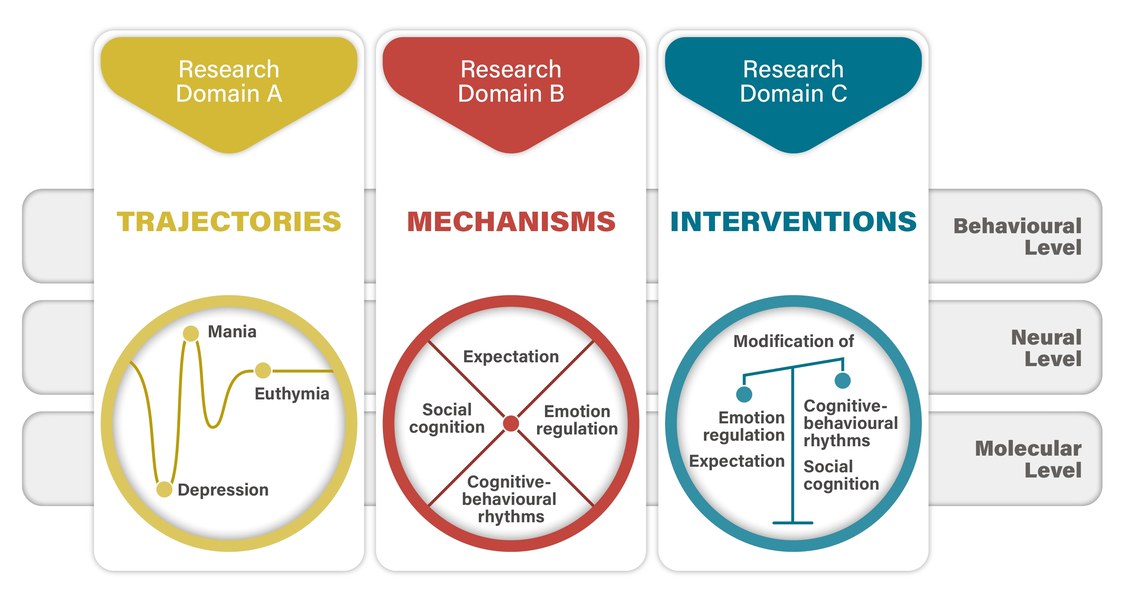Main Content
Research Domains and Projects of the SFB/TRR 393

Research Domain A: Trajectories
Defining long-term trajectories of AD, including subthreshold symptom changes, and the recurrence of depression or mania and their remission, requires an inclusive, multilevel approach. We will longitudinally assess the interactions between stressors (e.g., life events), mechanisms, and person-specific modifiers (e.g., genetic and early environmental risk factors, personality, somatic illnesses, age, sex, socio-demographic characteristics, sleep patterns) and their neurobiological correlates in real life. Innovative mobile assessment tools will be used to longitudinally monitor the effects of stressors and modifying factors on inflection signals in an unprecedentedly large and deeply characterized cohort.
Research Domain B: Mechanisms
The effects of stressors and modifying factors on symptom changes are mediated by cognitive- emotional mechanisms (emotion regulation, social cognition, expectation, cognitive-behavioural rhythms) that have neurobiological correlates. In highly parallelized, experimental human and animal projects, we will identify the impact of these key mechanisms on short-term symptom changes and long-term disease trajectories.
Research Domain C: Interventions
Based on the key cognitive-emotional mechanisms, experimental interventions will be developed that specifically target and probe these cognitive-emotional mechanisms (emotion regulation, social cognition, expectation, cognitive-behavioural rhythms) associated with symptom changes in AD.
Central Service Projects
The central projects will guarantee high data quality, analytic standards, Open Science, education, and tight cooperation between the research centres.





